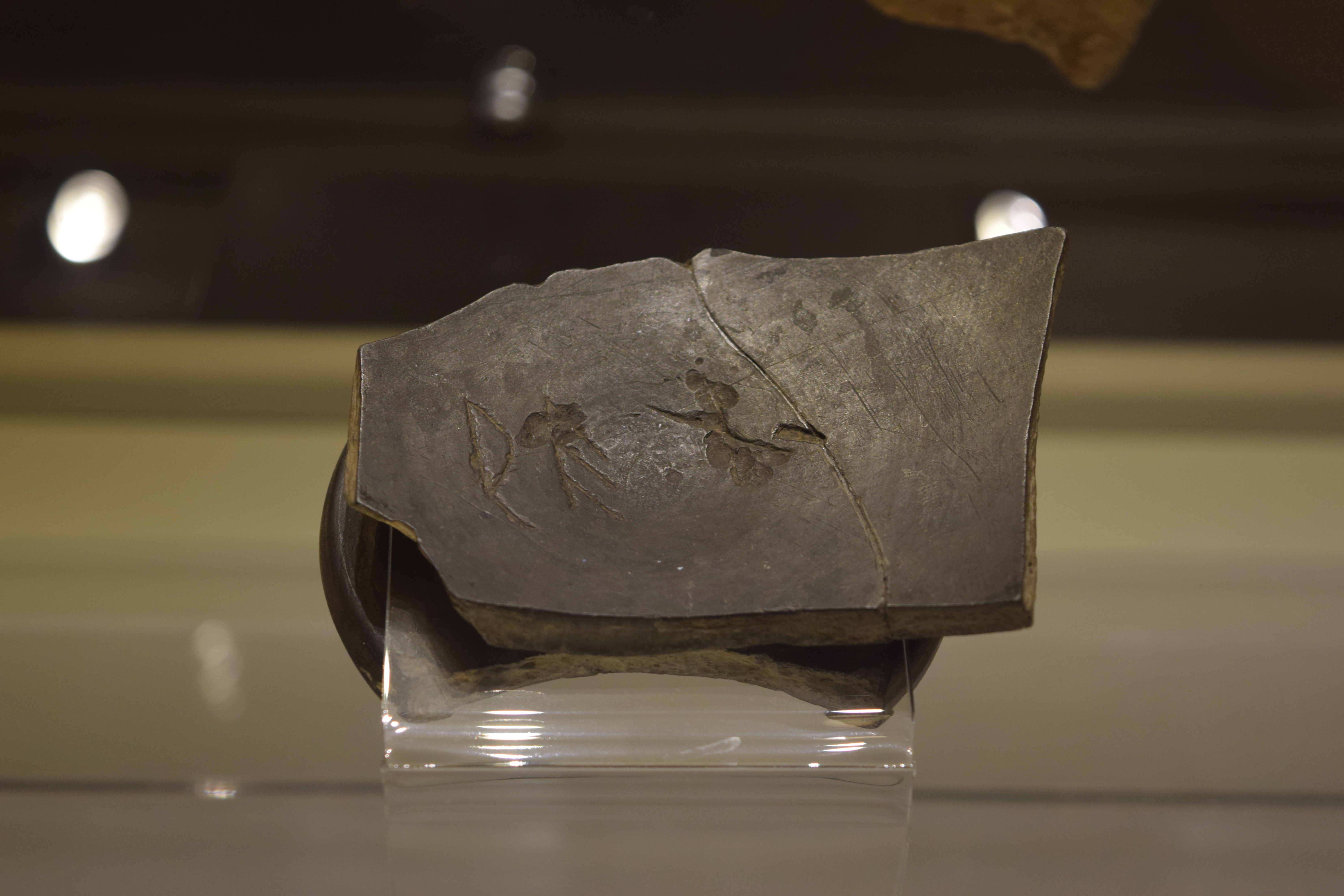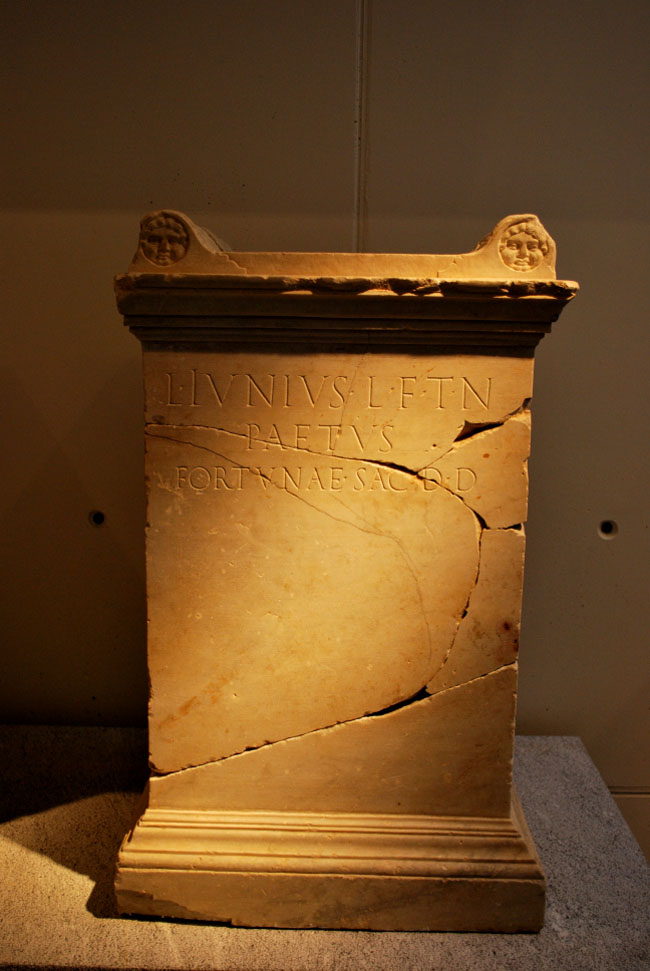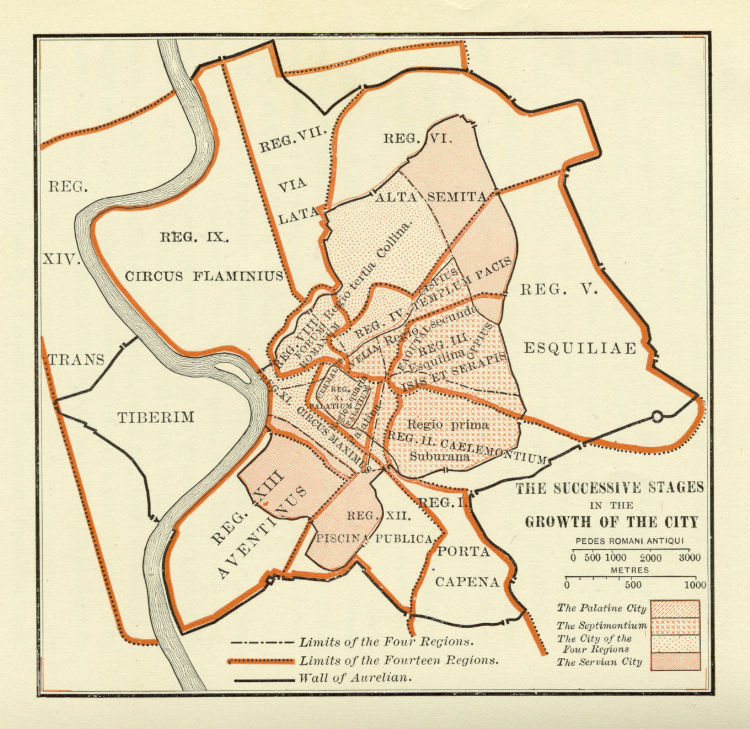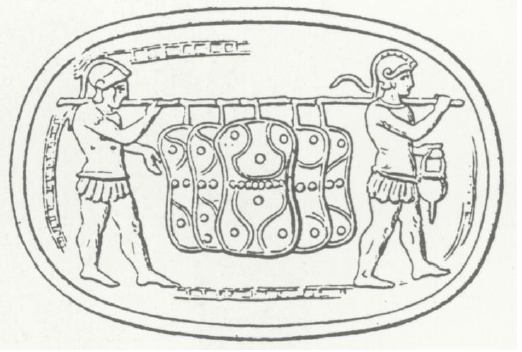|
Regia
The Regia ("Royal house") was a two-part structure in Ancient Rome lying along the Via Sacra at the edge of the Roman Forum that originally served as the residence or one of the main headquarters of kings of Rome and later as the office of the '' pontifex maximus'', the highest religious official of Rome. It occupied a triangular patch of terrain between the Temple of Vesta, the Temple of Divus Julius and Temple of Antoninus and Faustina. Only the foundations of Republican/Imperial Regia remain. Like the Curia it was destroyed and rebuilt several times, as far back as the Roman monarchy. Studies have found multiple layers of similar buildings with more regular features, prompting the theory that this "Republican Regia" was to have a different use. History According to ancient tradition it was built by the second king of Rome, Numa Pompilius, as a royal palace. Indeed, the Latin term ''regia'' can be translated as ''royal residence''. It is said that he also built the ... [...More Info...] [...Related Items...] OR: [Wikipedia] [Google] [Baidu] |
Glossary Of Ancient Roman Religion
The vocabulary of ancient Roman religion was highly specialized. Its study affords important information about the religion, traditions and beliefs of the ancient Romans. This legacy is conspicuous in European cultural history in its influence on later juridical and religious vocabulary in Europe, particularly of the Western Church. This glossary provides explanations of concepts as they were expressed in Latin pertaining to religious practices and beliefs, with links to articles on major topics such as priesthoods, forms of divination, and rituals. For theonyms, or the names and epithets of gods, see List of Roman deities. For public religious holidays, see Roman festivals. For temples see the List of Ancient Roman temples. Individual landmarks of religious topography in ancient Rome are not included in this list; see Roman temple. __NOTOC__ Glossary A abominari The verb ''abominari'' ("to avert an omen", from ''ab-'', "away, off," and ''ominari'', "to pronounce on ... [...More Info...] [...Related Items...] OR: [Wikipedia] [Google] [Baidu] |
Vestal Virgin
In ancient Rome, the Vestal Virgins or Vestals ( la, Vestālēs, singular ) were priestesses of Vesta, virgin goddess of Rome's sacred hearth and its flame. The Vestals were unlike any other public priesthood. They were chosen before puberty from a number of suitable candidates, freed from any legal ties and obligations to their birth family, and enrolled in Vesta's priestly college of six priestesses. They were supervised by a senior vestal but chosen and governed by Rome's leading male priest, the ; in the Imperial era, this meant the emperor. Successful acolytes vowed to serve Vesta for at least thirty years, to study and practise her rites in service of the Roman State, and to maintain their chastity throughout. As well as their obligations on behalf of Rome, Vestals had extraordinary rights and privileges, some of which were granted to no others, male or female. The Vestals took it in turns to supervise Vesta's hearth, so that at least one Vestal was stationed there at al ... [...More Info...] [...Related Items...] OR: [Wikipedia] [Google] [Baidu] |
Opiconsivia
The Opiconsivia (or Opeconsiva or Opalia) was an ancient Roman religious festival held August 25 in honor of Ops ("Plenty"), also known as Opis, a goddess of agricultural resources and wealth. The festival marked the end of harvest, with a mirror festival on December 19 concerned with the storage of the grain. J. Rufus Fears, "The Cult of Virtues and Roman Imperial Ideology," ''Aufstieg und Niedergang der römischen Welt'' II.17.2 (1981), p. 838. The Latin word ''consivia'' (or ''consiva'') derives from ''conserere'' ("to sow"). Opis was deemed a chthonic (underworld, inside the earth) goddess who made the vegetation grow. Since her abode was inside the earth, Ops was invoked by her worshipers while sitting, with their hands touching the ground, according to Macrobius (Saturnalia, I:10). Although Ops is a consort of Saturn, she was closely associated with Consus, the protector of grains and subterranean storage bins (silos). Consus is therefore thought to be an alternate name ... [...More Info...] [...Related Items...] OR: [Wikipedia] [Google] [Baidu] |
Roman Forum
The Roman Forum, also known by its Latin name Forum Romanum ( it, Foro Romano), is a rectangular Forum (Roman), forum (plaza) surrounded by the ruins of several important ancient government buildings at the center of the city of Rome. Citizens of the ancient city referred to this space, originally a marketplace, as the ', or simply the '. For centuries the Forum was the center of day-to-day life in Rome: the site of Roman triumph, triumphal processions and elections; the venue for public speeches, Roman litigation, criminal trials, and gladiator, gladiatorial matches; and the nucleus of commercial affairs. Here statues and monuments commemorated the city's great men. The teeming heart of ancient Rome, it has been called the most celebrated meeting place in the world, and in all history. Located in the small valley between the Palatine Hill, Palatine and Capitoline Hills, the Forum today is a sprawling ruin of architectural fragments and intermittent archaeological excavations a ... [...More Info...] [...Related Items...] OR: [Wikipedia] [Google] [Baidu] |
List Of Kings Of Rome
The Roman Kingdom (also referred to as the Roman monarchy, or the regal period of ancient Rome) was the earliest period of Roman history when the city and its territory were ruled by kings. According to oral accounts, the Roman Kingdom began with the city's founding 753 BC, with settlements around the Palatine Hill along the river Tiber in central Italy, and ended with the overthrow of the kings and the establishment of the Republic 509 BC. Little is certain about the kingdom's history as no records and few inscriptions from the time of the kings survive. The accounts of this period written during the Republic and the Empire are thought largely to be based on oral tradition. Origin The site of the founding of the Roman Kingdom (and eventual Republic and Empire) had a ford where one could cross the river Tiber in central Italy. The Palatine Hill and hills surrounding it provided easily defensible positions in the wide fertile plain surrounding them. Each of these features c ... [...More Info...] [...Related Items...] OR: [Wikipedia] [Google] [Baidu] |
14 Regions Of Augustan Rome
Fourteen or 14 may refer to: * 14 (number), the natural number following 13 and preceding 15 * one of the years 14 BC, AD 14, 1914, 2014 Music * 14th (band), a British electronic music duo * ''14'' (David Garrett album), 2013 *''14'', an unreleased album by Charli XCX * "14" (song), 2007, from ''Courage'' by Paula Cole Other uses * ''Fourteen'' (film), a 2019 American film directed by Dan Sallitt * ''Fourteen'' (play), a 1919 play by Alice Gerstenberg * ''Fourteen'' (manga), a 1990 manga series by Kazuo Umezu * ''14'' (novel), a 2013 science fiction novel by Peter Clines * ''The 14'', a 1973 British drama film directed by David Hemmings * Fourteen, West Virginia, United States, an unincorporated community * Lot Fourteen, redevelopment site in Adelaide, South Australia, previously occupied by the Royal Adelaide Hospital * "The Fourteen", a nickname for NASA Astronaut Group 3 * Fourteen Words, a phrase used by white supremacists and Nazis See also * 1/4 (other) * ... [...More Info...] [...Related Items...] OR: [Wikipedia] [Google] [Baidu] |
College Of Pontiffs
The College of Pontiffs ( la, Collegium Pontificum; see '' collegium'') was a body of the ancient Roman state whose members were the highest-ranking priests of the state religion. The college consisted of the '' pontifex maximus'' and the other '' pontifices'', the ''rex sacrorum'', the fifteen ''flamens'', and the Vestals. The College of Pontiffs was one of the four major priestly colleges; originally their responsibility was limited to supervising both public and private sacrifices, but as time passed their responsibilities increased. The other colleges were the '' augures'' (who read omens), the ''quindecimviri sacris faciundis '' ("fifteen men who carry out the rites"), and the '' epulones'' (who set up feasts at festivals). The title '' pontifex'' comes from the Latin for "bridge builder", a possible allusion to a very early role in placating the gods and spirits associated with the Tiber River, for instance. Also, Varro cites this position as meaning "able to do". The ''p ... [...More Info...] [...Related Items...] OR: [Wikipedia] [Google] [Baidu] |
Parte Di Fregio Con Minotauro E Felini, 600-550 Ac Ca , Latin legal term for "by the party"
{{disambig ...
Parte is the Italian word for part. It can refer to: * Part (music) * Conjugation of French verb "partir"; see French conjugation ;Surname * Víctor de la Parte (b. 1986), Spanish cyclist See also * Ex parte In law, ''ex parte'' () is a Latin term meaning literally "from/out of the party/faction of" (name of party/faction, often omitted), thus signifying "on behalf of (name)". An ''ex parte'' decision is one decided by a judge without requiring al ... [...More Info...] [...Related Items...] OR: [Wikipedia] [Google] [Baidu] |
Roman Senate
The Roman Senate ( la, Senātus Rōmānus) was a governing and advisory assembly in ancient Rome. It was one of the most enduring institutions in Roman history, being established in the first days of the city of Rome (traditionally founded in 753 BC). It survived the overthrow of the Roman monarchy in 509 BC; the fall of the Roman Republic in the 1st century BC; the division of the Roman Empire in AD 395; and the fall of the Western Roman Empire in 476; Justinian's attempted reconquest of the west in the 6th century, and lasted well into the Eastern Roman Empire's history. During the days of the Roman Kingdom, most of the time the Senate was little more than an advisory council to the king, but it also elected new Roman kings. The last king of Rome, Lucius Tarquinius Superbus, was overthrown following a coup d'état led by Lucius Junius Brutus, who founded the Roman Republic. During the early Republic, the Senate was politically weak, while the various executive magistr ... [...More Info...] [...Related Items...] OR: [Wikipedia] [Google] [Baidu] |
Aulus Gellius
Aulus Gellius (c. 125after 180 AD) was a Roman author and grammarian, who was probably born and certainly brought up in Rome. He was educated in Athens, after which he returned to Rome. He is famous for his ''Attic Nights'', a commonplace book, or compilation of notes on grammar, philosophy, history, antiquarianism, and other subjects, preserving fragments of the works of many authors who might otherwise be unknown today. Name Medieval manuscripts of the ''Noctes Atticae'' commonly gave the author's name in the form of "Agellius", which is used by Priscian; Lactantius, Servius and Saint Augustine had "A. Gellius" instead. Scholars from the Renaissance onwards hotly debated which one of the two transmitted names is correct (the other one being presumably a corruption) before settling on the latter of the two in modern times. Life The only source for the life of Aulus Gellius is the details recorded in his writings. Internal evidence points to Gellius having been born betwe ... [...More Info...] [...Related Items...] OR: [Wikipedia] [Google] [Baidu] |
Lance
A lance is a spear designed to be used by a mounted warrior or cavalry soldier ( lancer). In ancient and medieval warfare, it evolved into the leading weapon in cavalry charges, and was unsuited for throwing or for repeated thrusting, unlike similar weapons of the javelin and pike family typically used by infantry. Lances were often equipped with a vamplate, a small circular plate to prevent the hand sliding up the shaft upon impact, and beginning in the late 14th century were used in conjunction with a lance rest attached to the breastplate. Though best known as a military and sporting weapon carried by European knights and men-at-arms, the use of lances was widespread throughout Asia, the Middle East, and North Africa wherever suitable mounts were available. Lancers of the medieval period also carried secondary weapons such as swords, battle axes, war hammers, maces and daggers for use in hand-to-hand combat, since the lance was often a one-use-per-engagement wea ... [...More Info...] [...Related Items...] OR: [Wikipedia] [Google] [Baidu] |
Ancile
In ancient Rome, the ''ancilia'' (Latin, singular ''ancile'') were twelve sacred shields kept in the Temple of Mars. According to legend, one divine shield fell from heaven during the reign of Numa Pompilius, the second king of Rome. He ordered eleven copies made to confuse would-be thieves, since the original shield was regarded as one of the '' pignora imperii (pledges of rule)'', sacred guarantors that perpetuated Rome as a sovereign entity. The shields are identified by their distinct 'figure of eight' shape which is said to be derived from Mycenaean art. As described by Plutarch, the shape of the ancile is a standard shield, neither round or oval, which has curved indentations on both sides. The ancilia were kept by the Salii, a body of twelve priests instituted for that purpose by Numa. The Salii wielded them ritually in a procession throughout March. According to Varro, the ancilia may have also made an appearance in the Armilustrium (‘Purification of the Arms’) in O ... [...More Info...] [...Related Items...] OR: [Wikipedia] [Google] [Baidu] |







